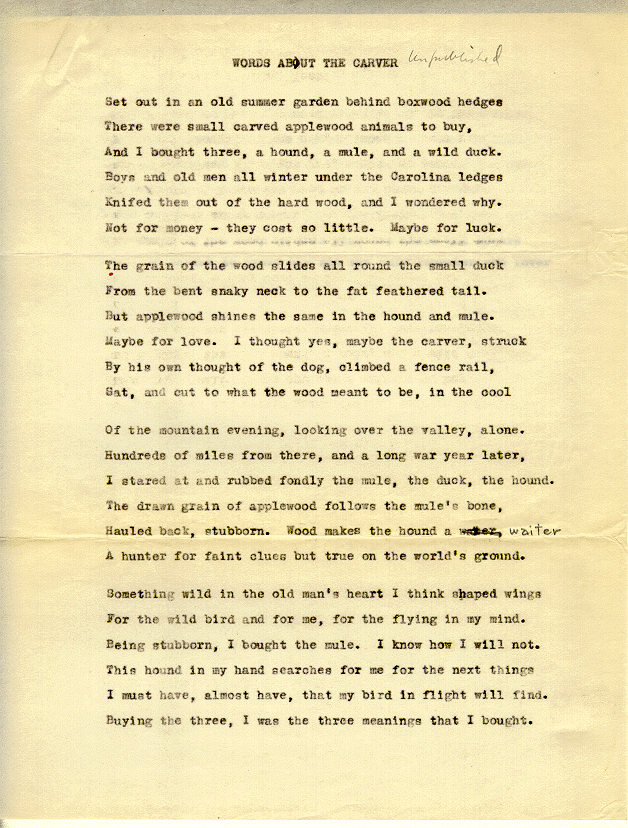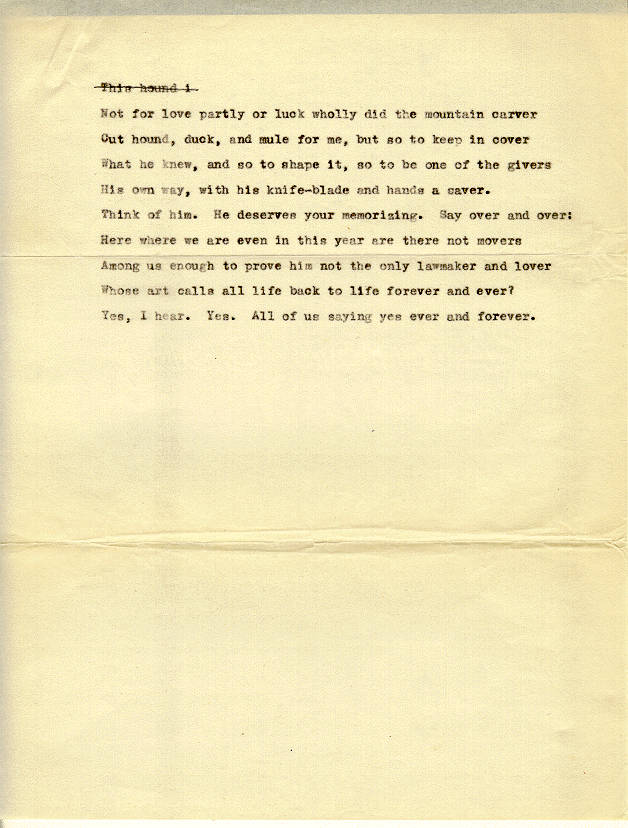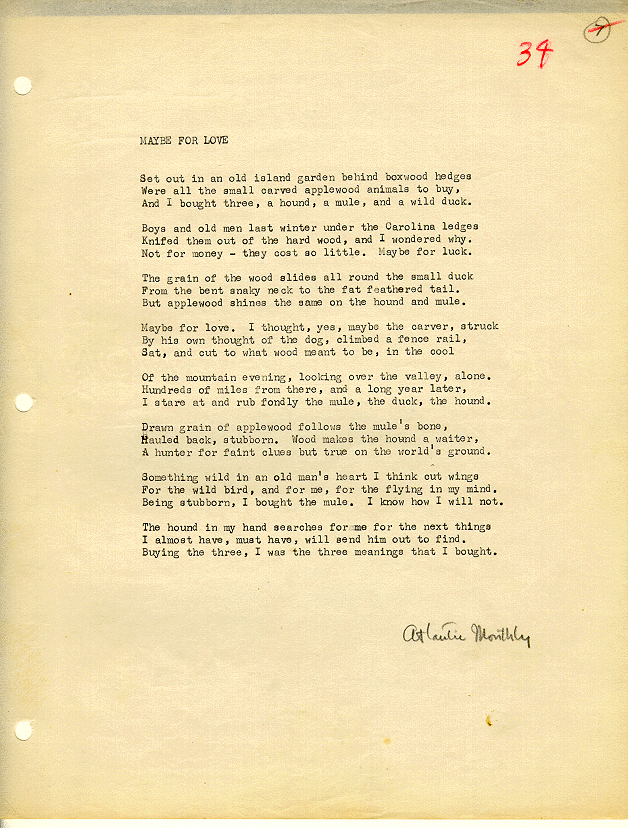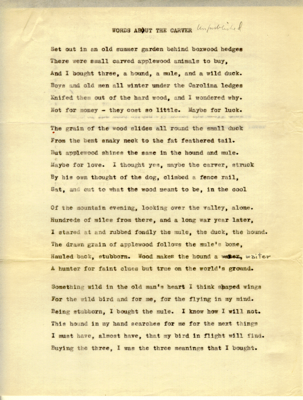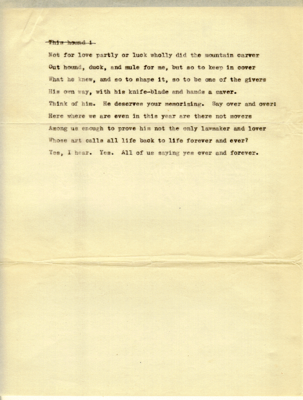Maybe for Love
From Writing Poetry (Boston: The Writer, Inc., 1960), 45-7.
There is also in The Double Root a poem called "Maybe for Love," which constructed itself in a curious rhyme-scheme, with the first three lines matching the second three, the third three matching the fourth three, and the fifth the sixth. The seventh is also matched by the eighth group of three lines, but this pair of triplets is the summing-up, a sort of coda, and is like the three pairs preceding it. The explanation of the triple framing is the fact that I once bought, at a summer sale of handicraft, three carved wooden animals, a duck, a mule, and a hound.
I let these determine the rhymes, and let the rhymes determine the three-line grouping, but had to stop somewhere, somehow. It was like writing a sort of super-terzanina, which as everyone knows, especially Dante and John Ciardi, can go on forever. Perhaps I make the writing of the poem sound difficult. It was not at all difficult, but the pattern that immediately took shape was very rigid. It then became a wonderfully exciting contest, my wits against the inexorable Thing I had conjured up by idly buying some carved applewood objects at a garden sale in Nantucket. I had watched with amused superiority the women choosing cute little chickies, darling little bunny-rabbits, and had thought with what guilelessness people reveal themselves for what they are. Bunny-rabbits, indeed. So up I stepped and bought a wild duck, a mule, and a hound-dog. Nothing very revealing about that. My innermost soul, that's all. But the workmanship was excellent, the wood had come alive, and I had the subject of the poem the minute I paid my money, what I bought giving me the form. It was the carver I was slow to acknowledge, but now I praise him:
Set out in an old island garden behind boxwood hedges
Were all the small carved applewood animals to buy,
And I bought three, a hound, a mule, and a wild duck.
Boys and men last winter under the Carolina ledges
Knifed them out of the hard wood, and I wondered why.
Not for money-they cost so little. Maybe for luck.
The grain of the wood slides all round the small duck,
From the bent snaky neck to the fat feathered tail,
But applewood shines the same in hound or mule.
Maybe for love. I thought, yes, maybe the carver, struck
By his own thought of the dog, climbed a fence rail,
Sat, and cut to what wood meant to be, in the cool
Of the mountain evening, looking over the valley, alone.
Hundreds of miles from there, and a long year later,
I stare at and rub fondly the mule, the duck, the hound.
Drawn grain of applewood follows the mule's bone,
Hauled back, stubborn. Wood makes the hound a waiter,
A hunter for faint clues but true on the world's ground.
Something wild in an old man's heart I think cut wings
For the wild bird, and for me, for the flying in my mind.
Being stubborn, I bought the mule. I know how I will not.
The hound in my hand searches for me for the next things
I almost have, must have, will send him out to find.
Buying the three, I was the three meanings I bought.
The eye, if not the ear, will now perceive the rhyme-scheme: hedges, buy, duck, ledges, why, luck, and the rest in the same sequence. Copying it here, I feel again the surge of each even-numbered triplet, the second, fourth, sixth, and eighth, each line of which would come up against an unshakable wall, the rhyme I had set myself. I feel, too, the swiftness with which I used those lines to thrust in the necessary exposition. I knew the carving had been done at a mountain school in the Carolinas, and someone had hung a picture of an old man sitting on a fence-rail with a jack-knife and a hunk of wood. Hedges they had in Nantucket, and ledges they had in Carolina, just when I needed them. The duck's tail got me the fence rail, and so on. Duck made me speculate as to luck, and that led me to love, and the true title. I note now a sort of stranding within the tripled triple strands, of "a hound, a mule, and a wild duck" in the third line, and "the mule, the duck, the hound," in the fifteenth. I know that for some time before I set it down, I could see the last line coming, and it fell into place more with a final hammer-blow than a mere click. They talk about the inevitability of lines and whole poems: the thing that had to be, becoming. All I know for sure is that we have almost everything nowadays, but we don't have self-writing pencils.
There are two manuscript versions of "Maybe for Love" in the John Holmes Collection. The first is a draft that is formed into six-line stanzas and adds an additional stanza at the end. The second shows the poem in its final version as it appeared in publication.
